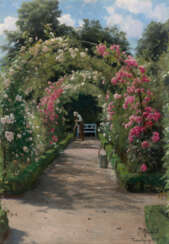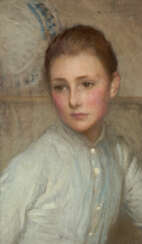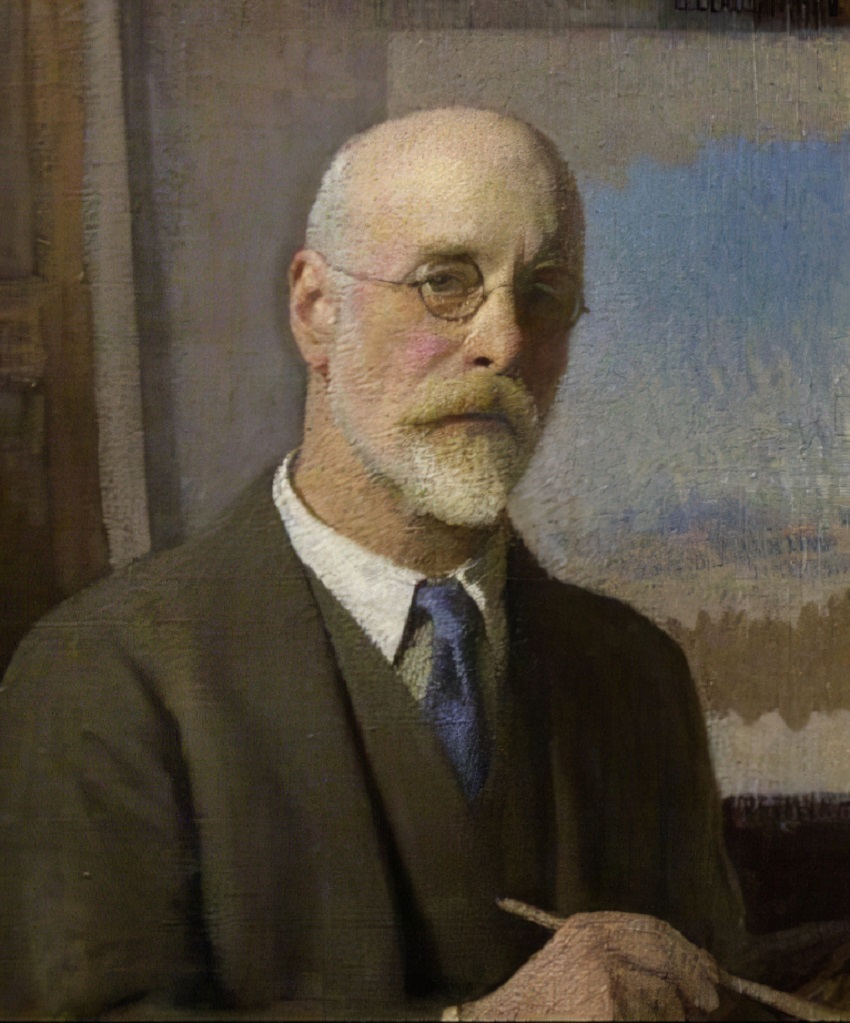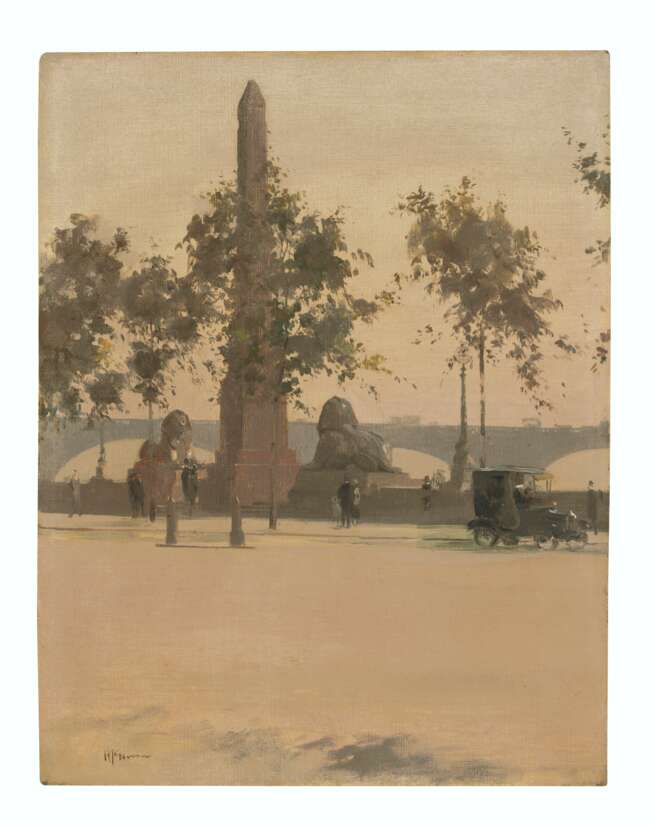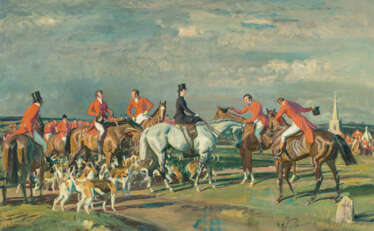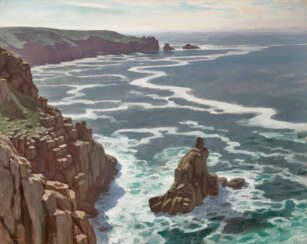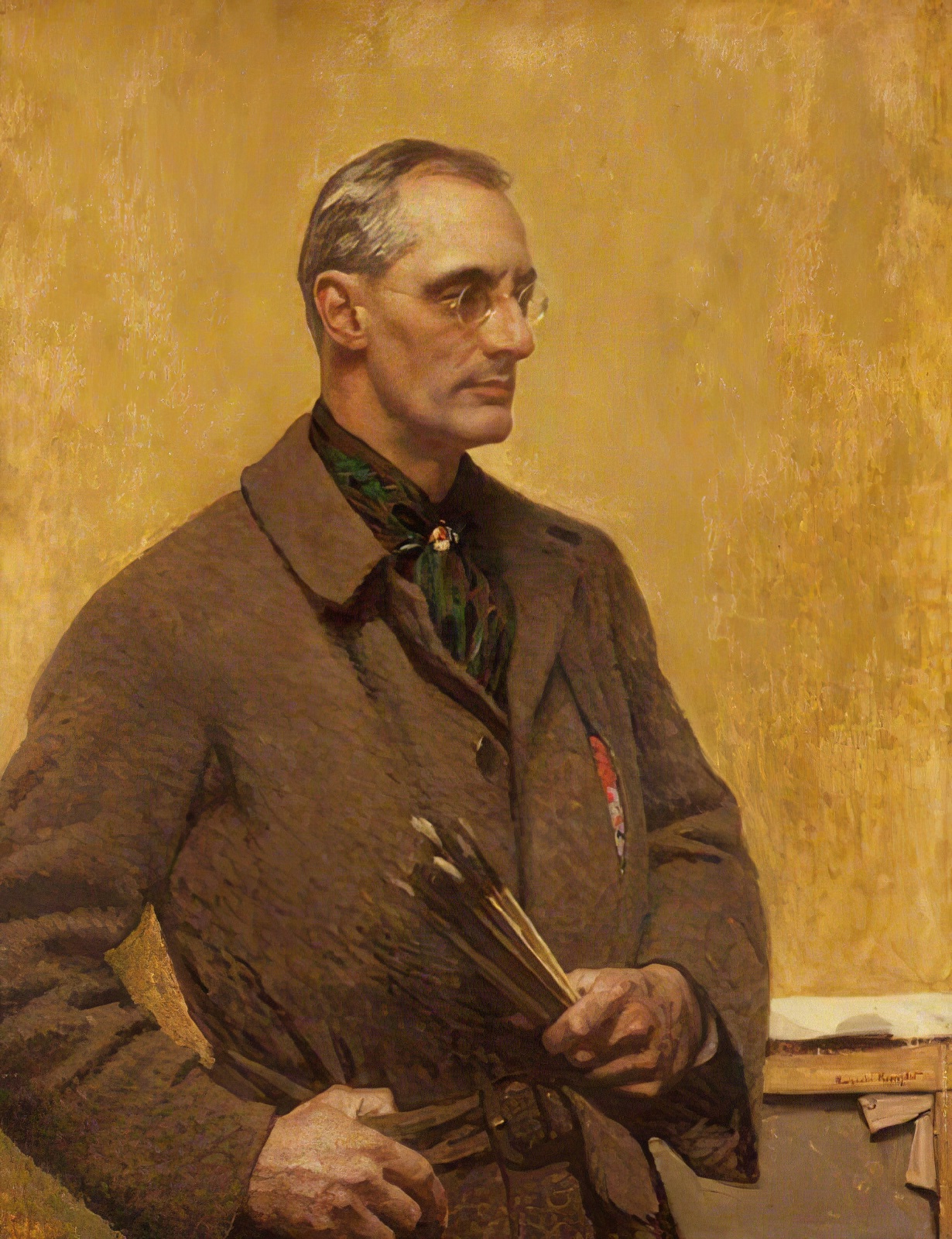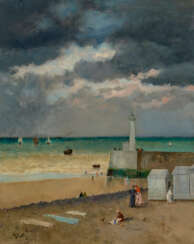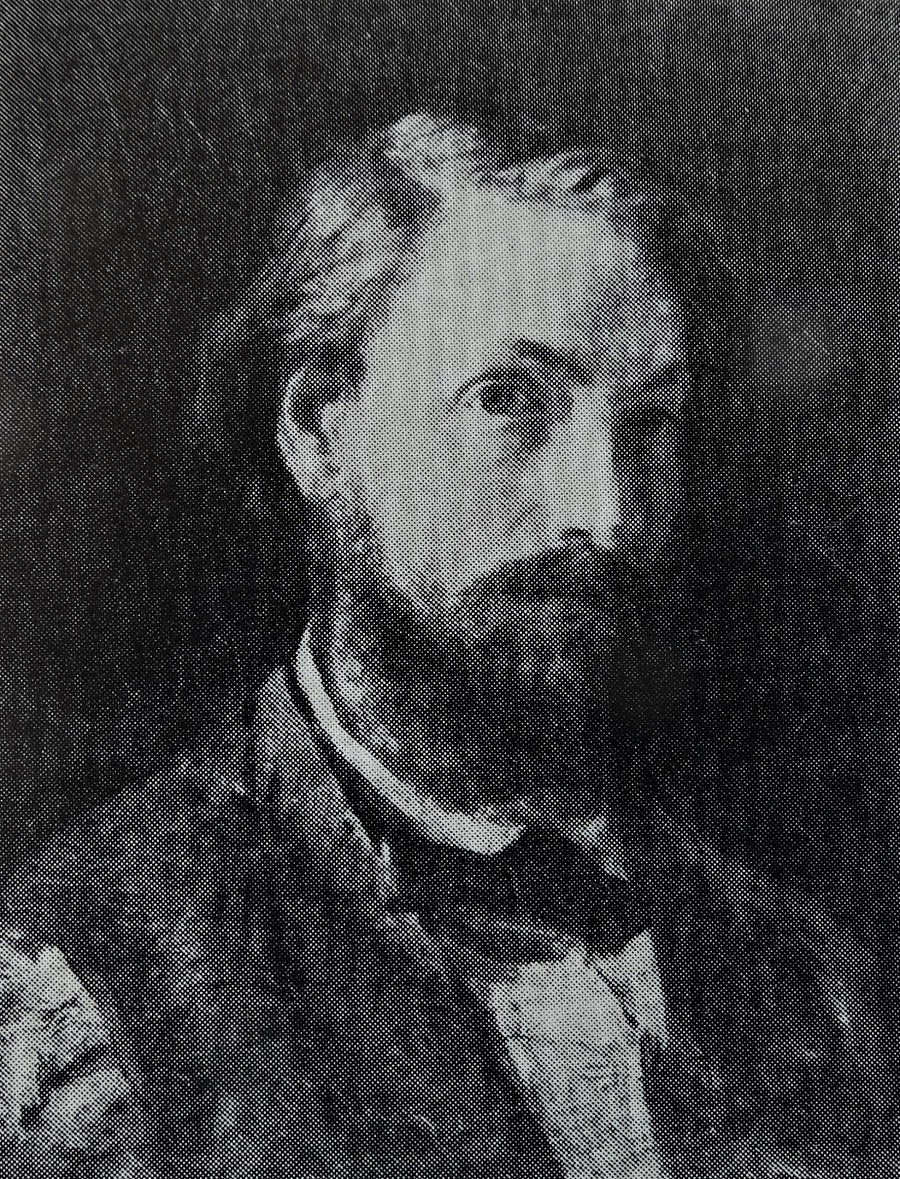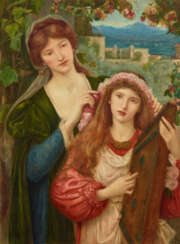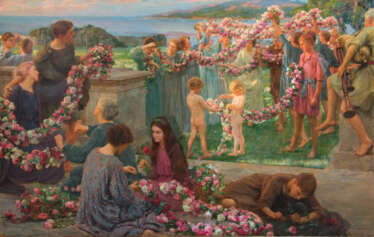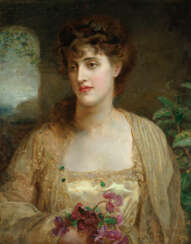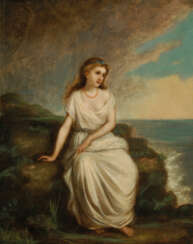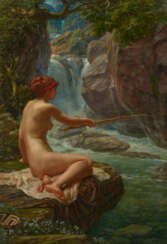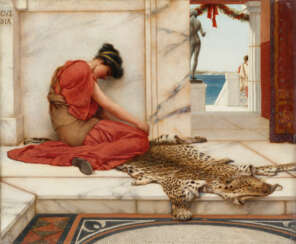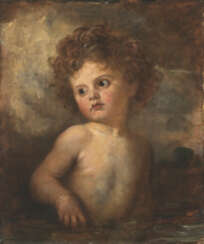
Paintings — British and European Art
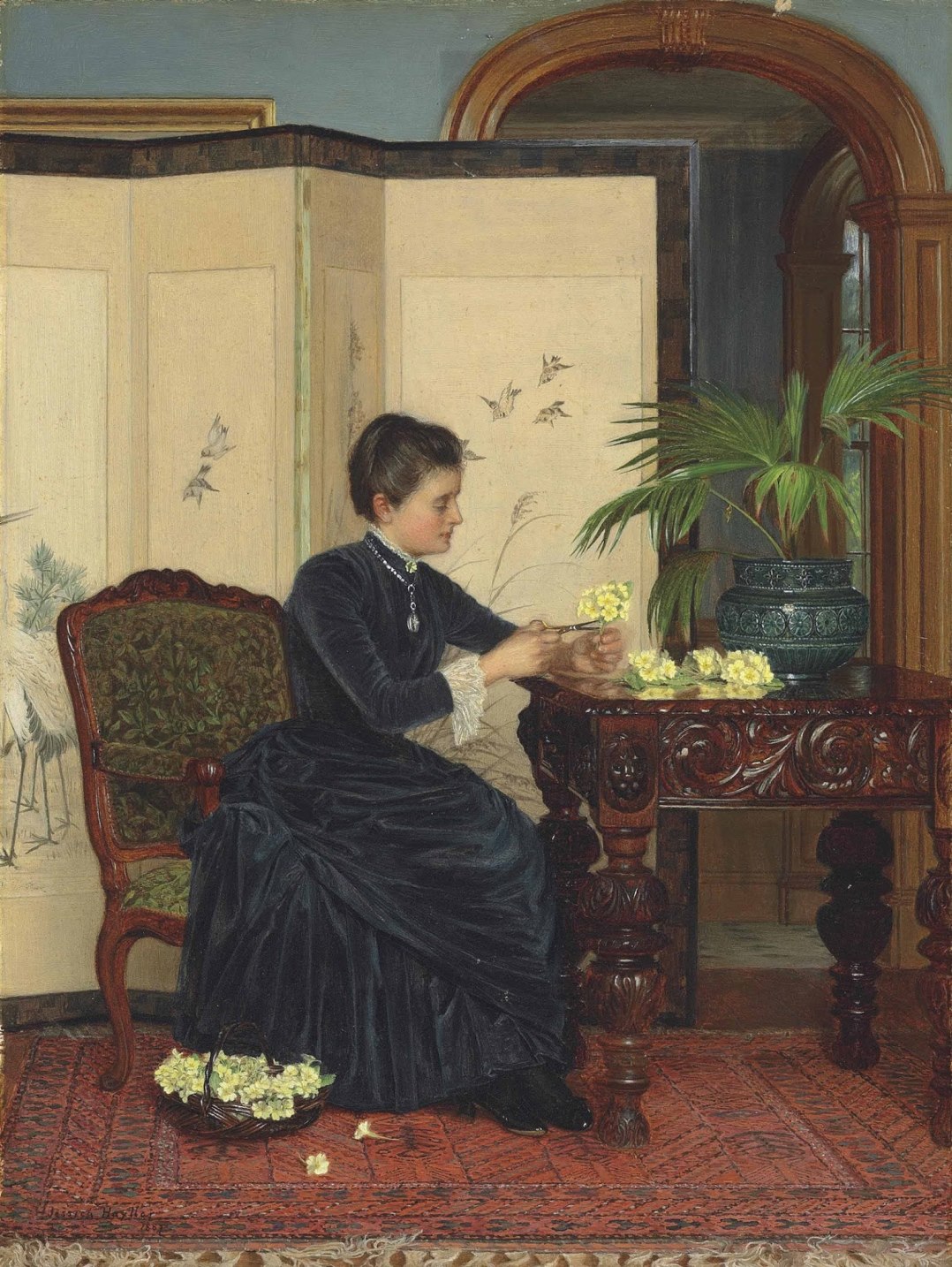
Jessica Ellen Hayllar is a British artist and painter.
Jessica was born into the family of English painter James Hayllar (1829-1920). Besides her, his three other daughters - Edith, Mary and Kate were also famous artists. Jessica studied under her father and began exhibiting her work in 1879. In her paintings, she most often depicted members of her family in everyday life and holidays, in quiet interiors and surrounded by flowers. Moreover, much of Jessica Hayllar's work represents an idealized view of female domestic life in the Victorian era.
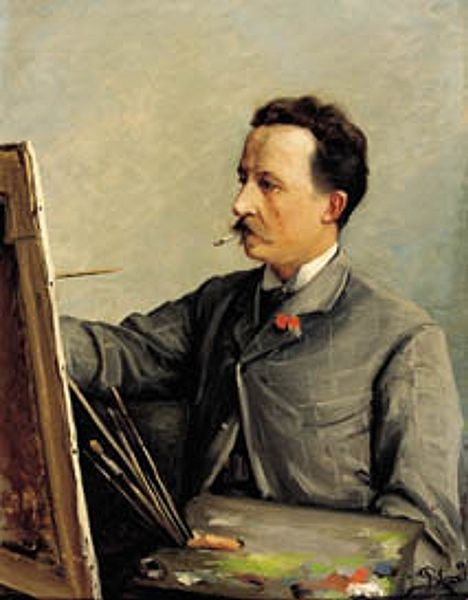
Peder Mork Monsted (Danish: Peder Mørk Mønsted) was a Danish realist painter, representative of the Golden Age of Danish painting.
Monsted studied at the Royal Academy of Fine Arts and gradually developed his own style of academic naturalism, almost photorealistic. During his long career, P. Monsted traveled extensively, often visiting Switzerland, Italy, North Africa, Greece, where he was a guest of the royal family and for a year painted their portraits.
Favorite themes of the artist were Danish landscapes - snowy winter or summer landscapes with boats on the water, forest. From the beginning of the XX century and until his death P. Monsted was one of the most popular and wealthy artists. He was especially popular in Germany among the Munich public.
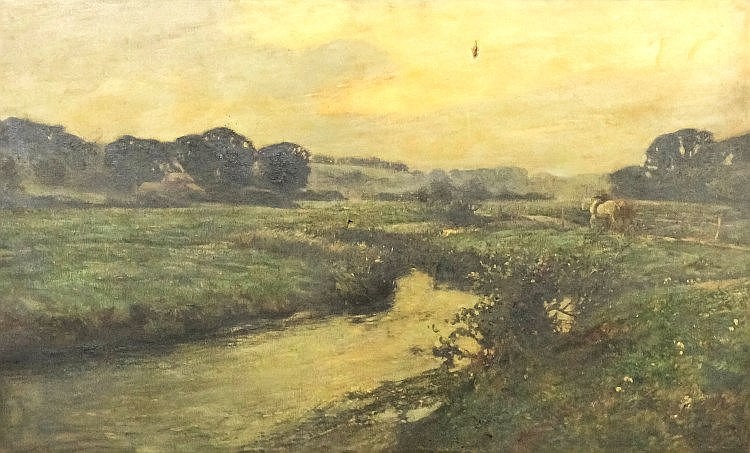
Harry Watson was an English landscape and portrait artist born in Scarborough. He studied at the Scarborough School of Art, at Lambeth School of Art and at the Royal College of Art, where he won numerous gold, silver and bronze medals and was awarded a traveling scholarship to Italy. Watson exhibited at the Royal Academy from 1896. Taught at Regent Street Polytechnic from 1913. Watson embraced En plein air painting, often capturing the effect of natural light falling to on to his subjects which gives many of his works an impressionistic style. His paintings Sunlight Reflected Upon a Wide Riverscape and Reflected Light are two examples which demonstrate his use of natural light. His watercolour Across the River is in the permanent collection at the Tate Gallery. The Christchurch art gallery, Wellington art gallery and Brighton & Hove Museum & Art Gallery also have examples of his work. His work was part of the painting event in the art competition at the 1932 Summer Olympics.
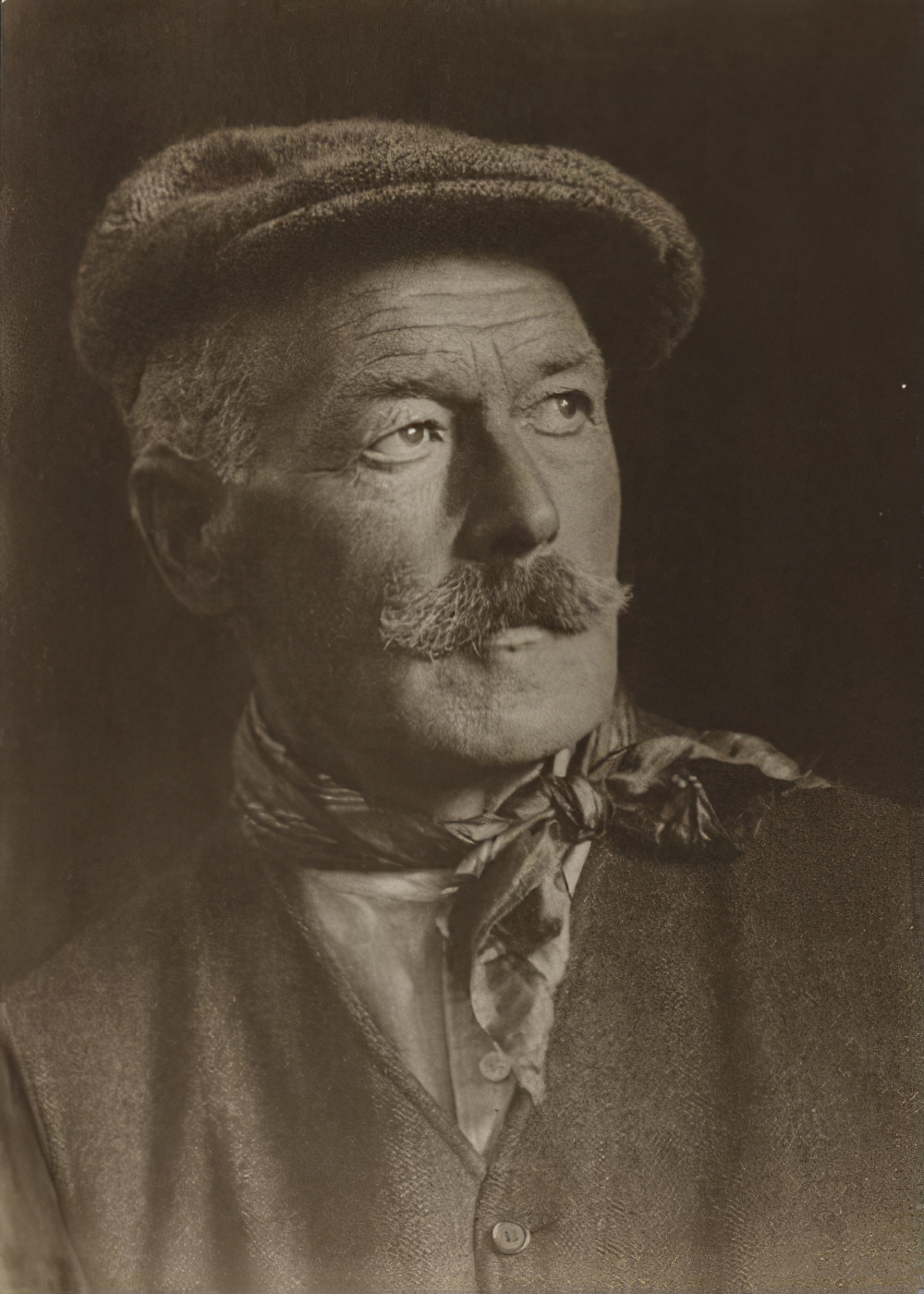
Henry Scott Tuke was an English visual artist; primarily a painter, but also a photographer. His most notable work was in the Impressionist style, and he is best known for his paintings of nude boys and young men.
Trained at the Slade School of Art under Alphonse Legros and Sir Edward Poynter, Tuke developed a close relationship with the Newlyn School of painters, his work being exhibited at the Royal Academy of Arts, of which he became a Full Member. In addition to his achievements as a figurative painter, he was an established maritime artist and produced many portraits of sailing ships. He was highly prolific, with over 1,300 works listed and more being discovered.
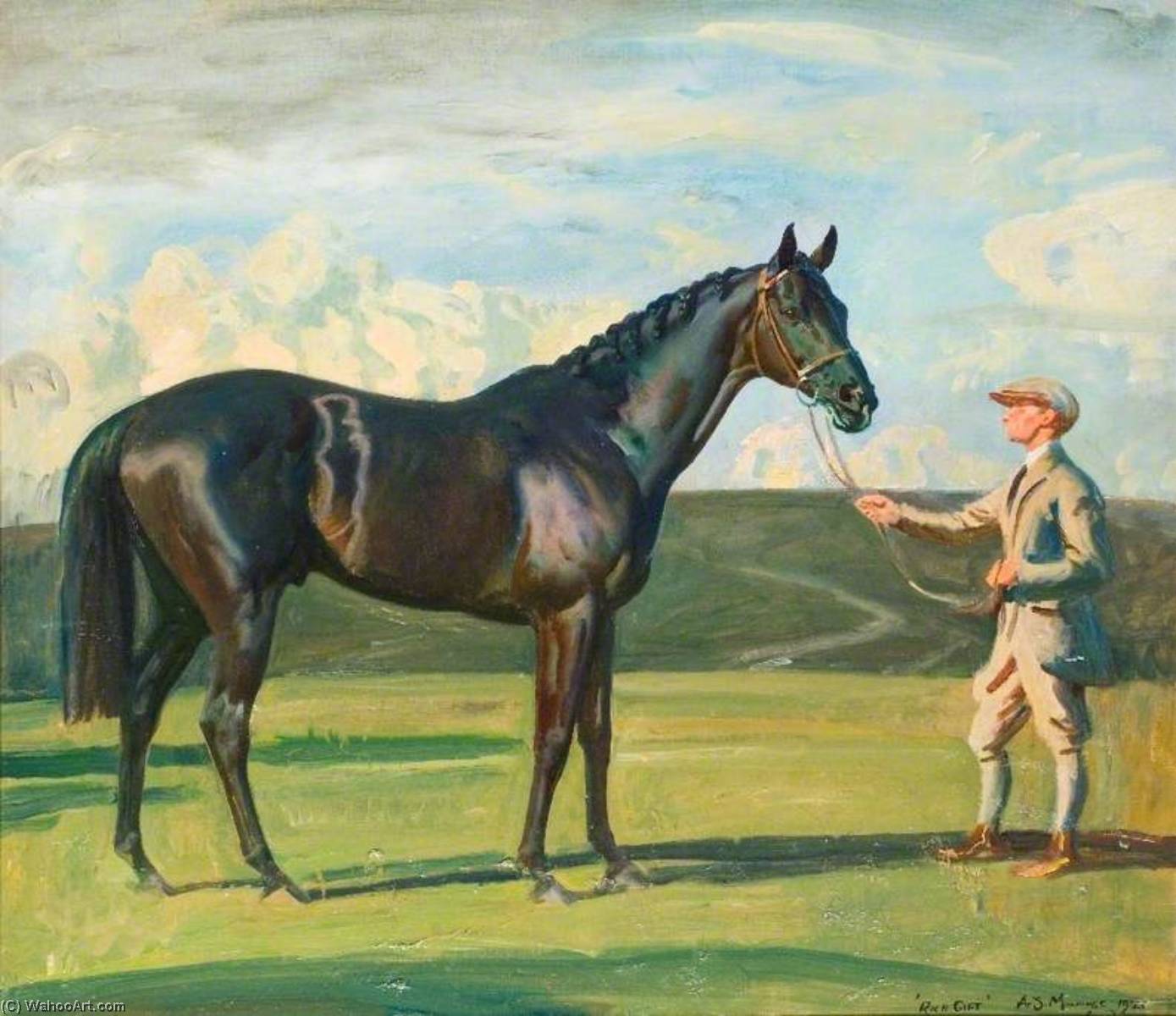
Alfred James Munnings was known as one of England's finest painters of horses, and as an outspoken critic of Modernism. Engaged by Lord Beaverbrook's Canadian War Memorials Fund, he earned several prestigious commissions after the Great War that made him wealthy. Between 1912 and 1914 he was a member of the Newlyn School of artists. His work was part of the art competitions at the 1928 Summer Olympics, the 1932 Summer Olympics, and the 1948 Summer Olympics.
Munnings was president of the Royal Academy of Arts from 1944 until his death.

Alfred James Munnings was known as one of England's finest painters of horses, and as an outspoken critic of Modernism. Engaged by Lord Beaverbrook's Canadian War Memorials Fund, he earned several prestigious commissions after the Great War that made him wealthy. Between 1912 and 1914 he was a member of the Newlyn School of artists. His work was part of the art competitions at the 1928 Summer Olympics, the 1932 Summer Olympics, and the 1948 Summer Olympics.
Munnings was president of the Royal Academy of Arts from 1944 until his death.
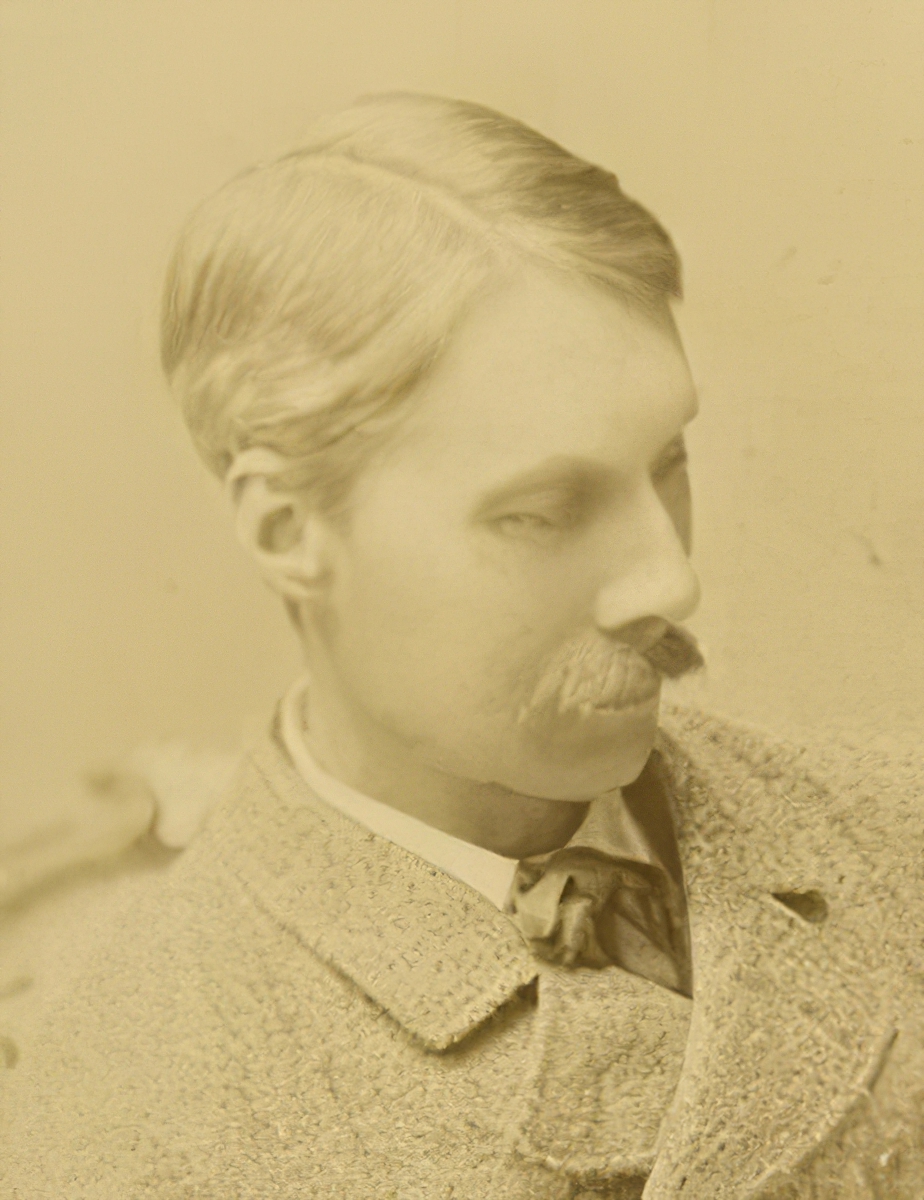
Albert Goodwin was a British landscapist specialising in watercolours. His work shows the influences of Turner and the Pre-Raphaelite Brotherhood.
Goodwin was a prolific artist, producing over 800 works and continuing to paint well into his eighties. His wide variety of landscape subjects reflected his love of travel and show the influence of Turner, with whom he felt a strong affinity. In later works he developed experimental techniques such as using ink over water color to achieve atmospheric lighting effects. His works are also an important record of social history.
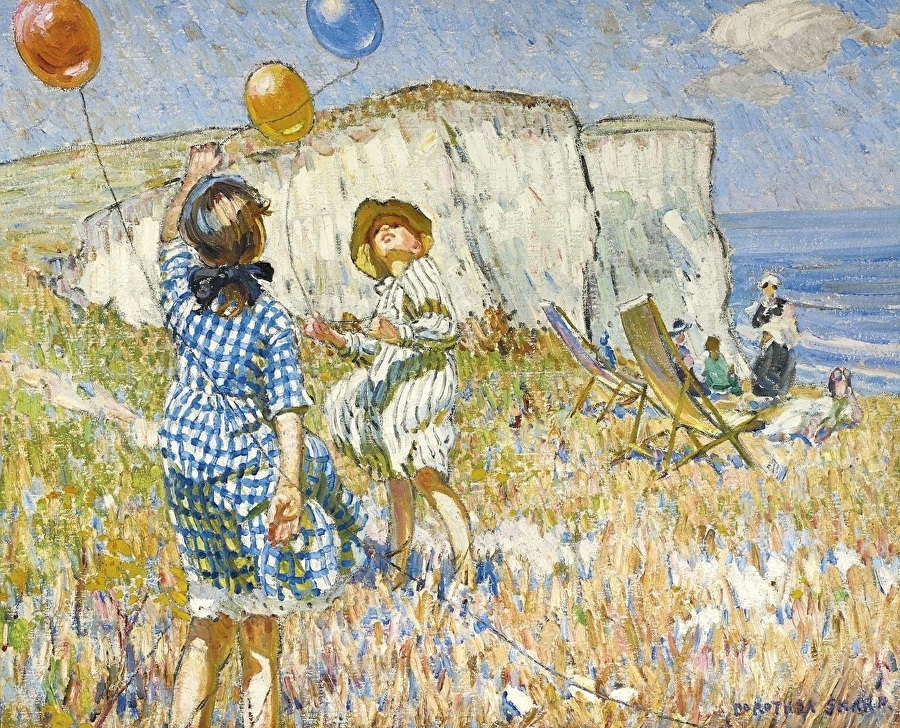
Dorothea Sharp was a British Impressionist painter.
Her artistic style was shaped by the work of Claude Monet in Paris and remained until the end of her life. Dorothea Sharp's works are attracted by serene joy: a windy day, the cries of seagulls and children playing by the warm sea in bright sunlight. This was the world of Dorothea's childhood - the world of prosperous and affluent Victorian Britain. Dorothea's life also coincided happily with the dynamic development of the art world and the Women's Rights Revolution, which for the first time gave women artists the opportunity to participate in major public exhibitions.
Dorothea Sharp was a member of the Royal Society of British Artists, the Royal Institute of Oil Painters and the Society of Women Artists.
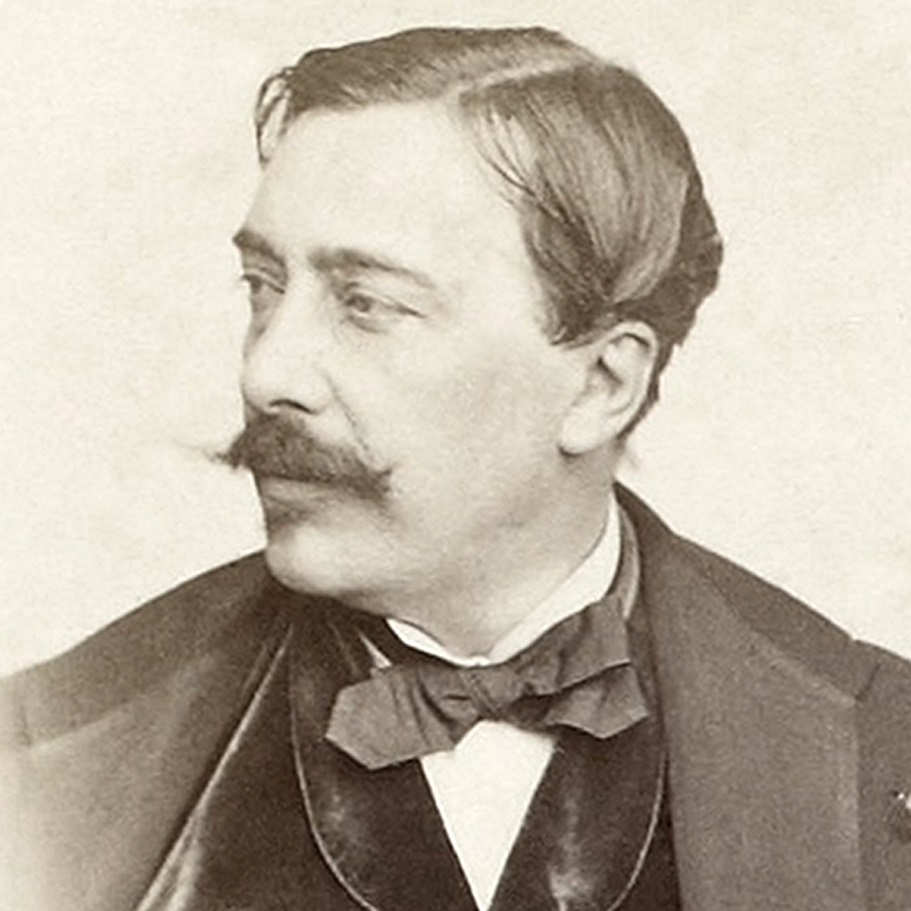
Alfred Émile Léopold Stevens was a Belgian painter, known for his paintings of elegant modern women. After gaining attention early in his career with a social realist painting depicting the plight of poor vagrants, he achieved great critical and popular success with his scenes of upper-middle class Parisian life. In their realistic style and careful finish, his works reveal the influence of 17th-century Dutch genre painting.

Alfred William Parsons was a British artist, illustrator and renowned garden designer, a Fellow of the Royal Academy.
He studied at the Kensington School of Art and was a keen gardener thanks to his gardener father. Parsons' favorite subject matter in his paintings is flowering gardens, paths between flowerbeds, and coastal riverscapes. His detailed botanical illustrations led to an acquaintance with William Robinson, one of the great gardeners of his day. He commissioned Parsons to create illustrations for The Wild Garden, and then received his first garden commission from architect Philip Webb. Parsons created several more simple but stunning gardens that harmonized new and traditional elements.
After traveling to Japan, Parsons published his impressions of the country under the title Notes in Japan (1896), and he painted 132 watercolors depicting roses for Ellen Willmott's book Rod Rosa.
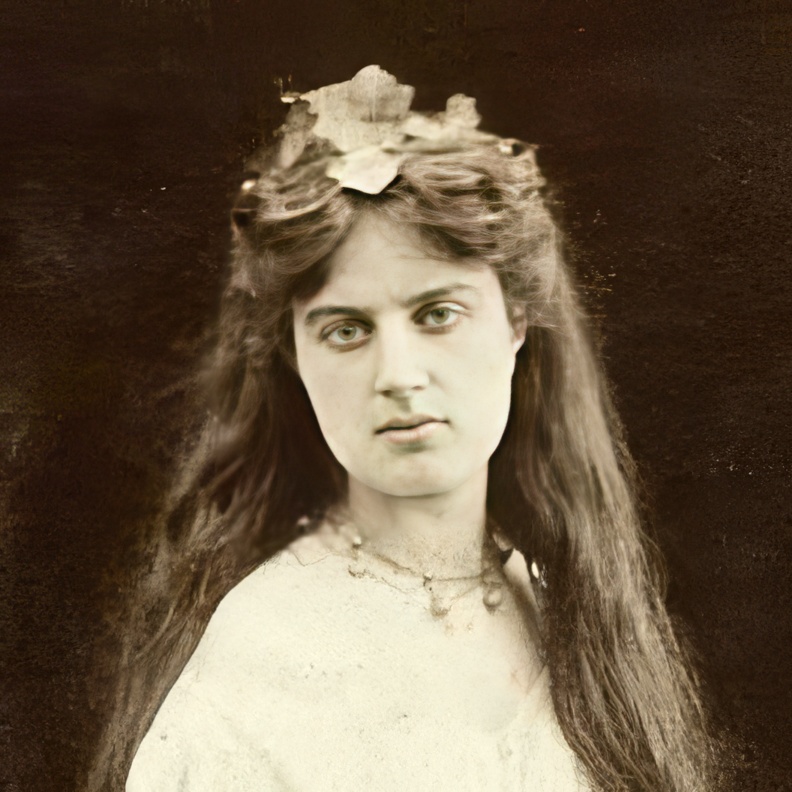
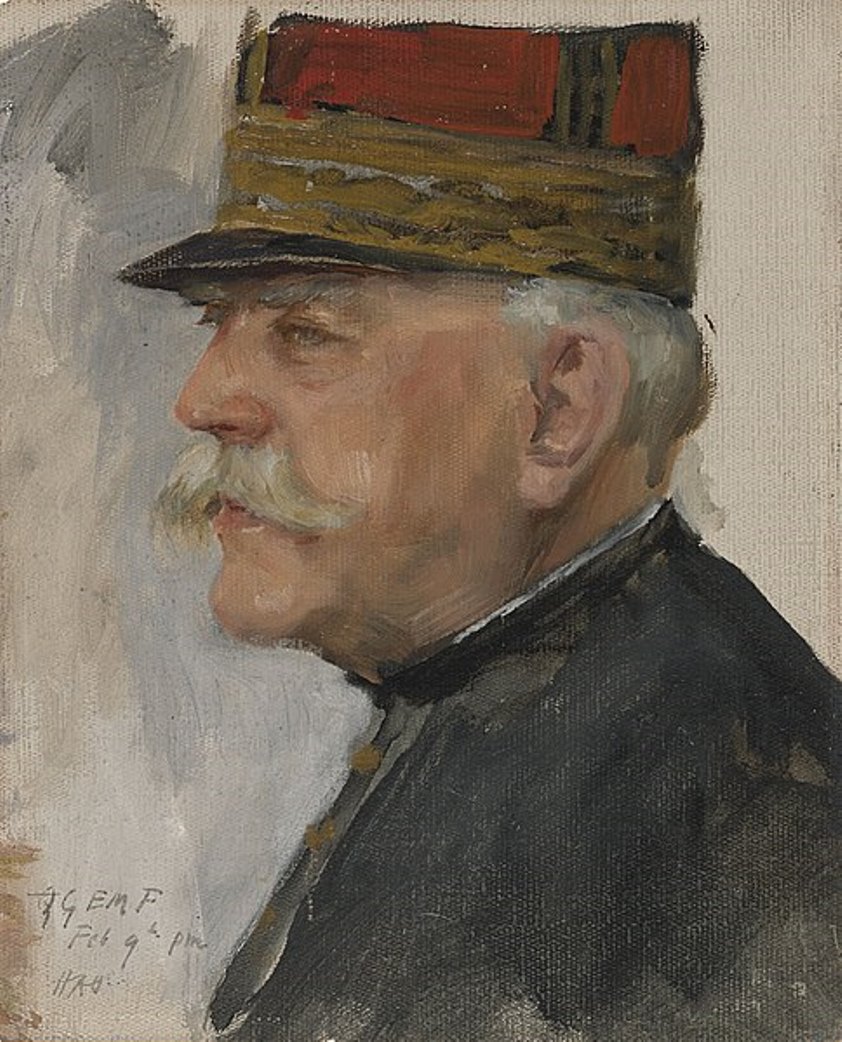
Herbert Arnould Olivier is a British artist.
He studied at the Royal Academy Schools and exhibited extensively, taught at the Bombay School of Art and traveled to Kashmir with His Royal Highness the Duke and Duchess of Connaught, painting 66 paintings on this trip. Herbert Olivier was a widely recognized and very versatile artist.
He painted portraits of famous Victorian and Edwardian figures including King George V and King Edward VIII, Prince of Wales. With the outbreak of the First World War, he painted two large-scale group portraits featuring army commanders. In 1917 he was appointed official war artist and painted many portraits of military commanders and officials from various countries, these his paintings can be seen in the Imperial War Museum and the Government Art Collection.
Herbert Olivier also painted many paintings of allegorical and mythological subjects and romantic landscapes. He was a member of the Royal Society of British Artists and the Royal Institute of Watercolorists.
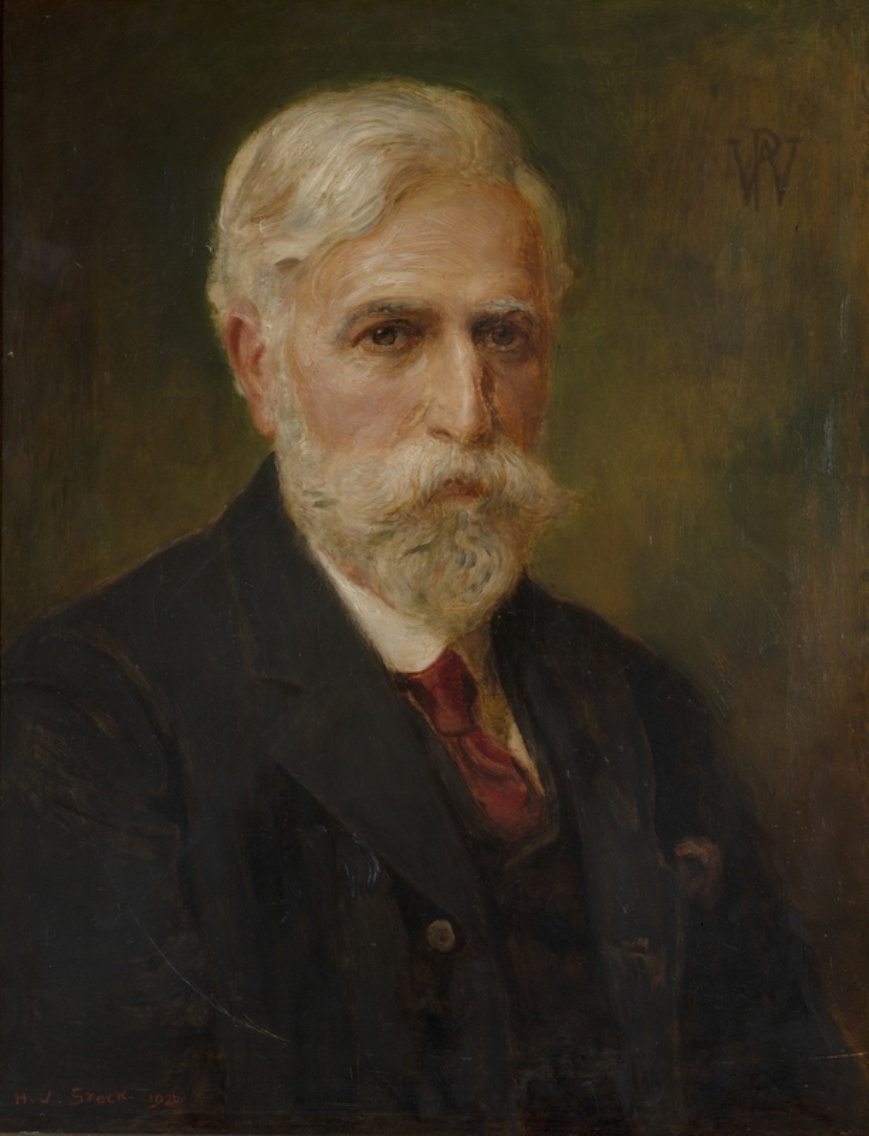
Henry John Stock was a British Pre-Raphaelite painter and representative of the English Romantic tradition.
Henry was nearly blind as a child, but gained his sight when he went to live at Beaulieu in the New Forest. Fully recovered, he attended St. Martin's School of Art and the Royal Academy schools. And apparently the trials of his childhood played a role in the artist's outlook. Stock enjoyed success as a secular portraitist, but his main area of interest has always been fantasy, religious and mythological subjects.
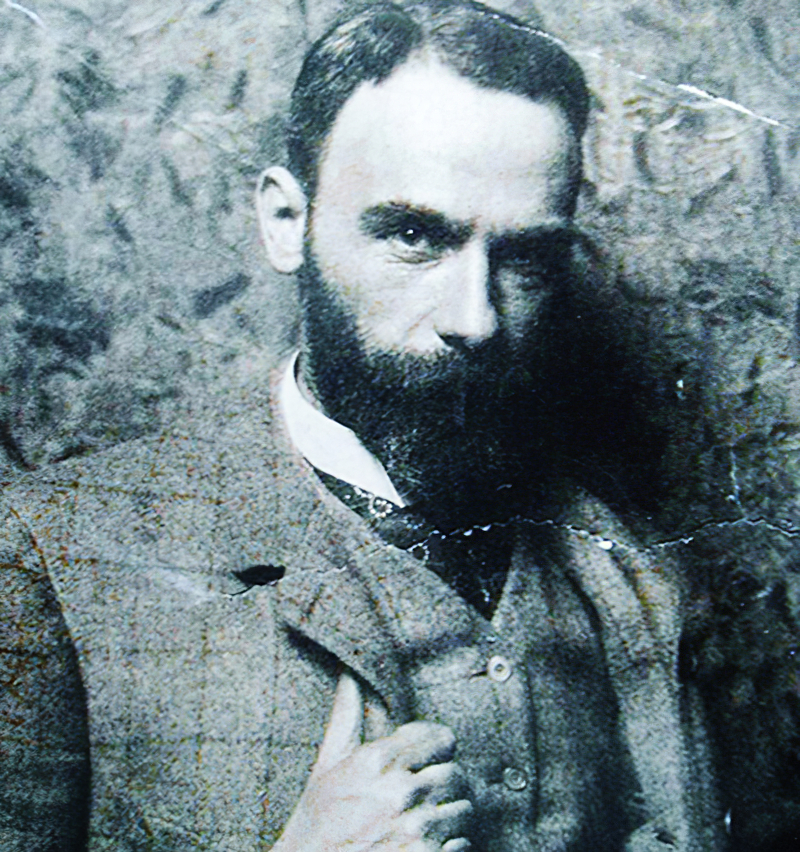
John William Waterhouse was an English painter known for working first in the Academic style and for then embracing the Pre-Raphaelite Brotherhood's style and subject matter. His artworks were known for their depictions of women from both ancient Greek mythology and Arthurian legend.
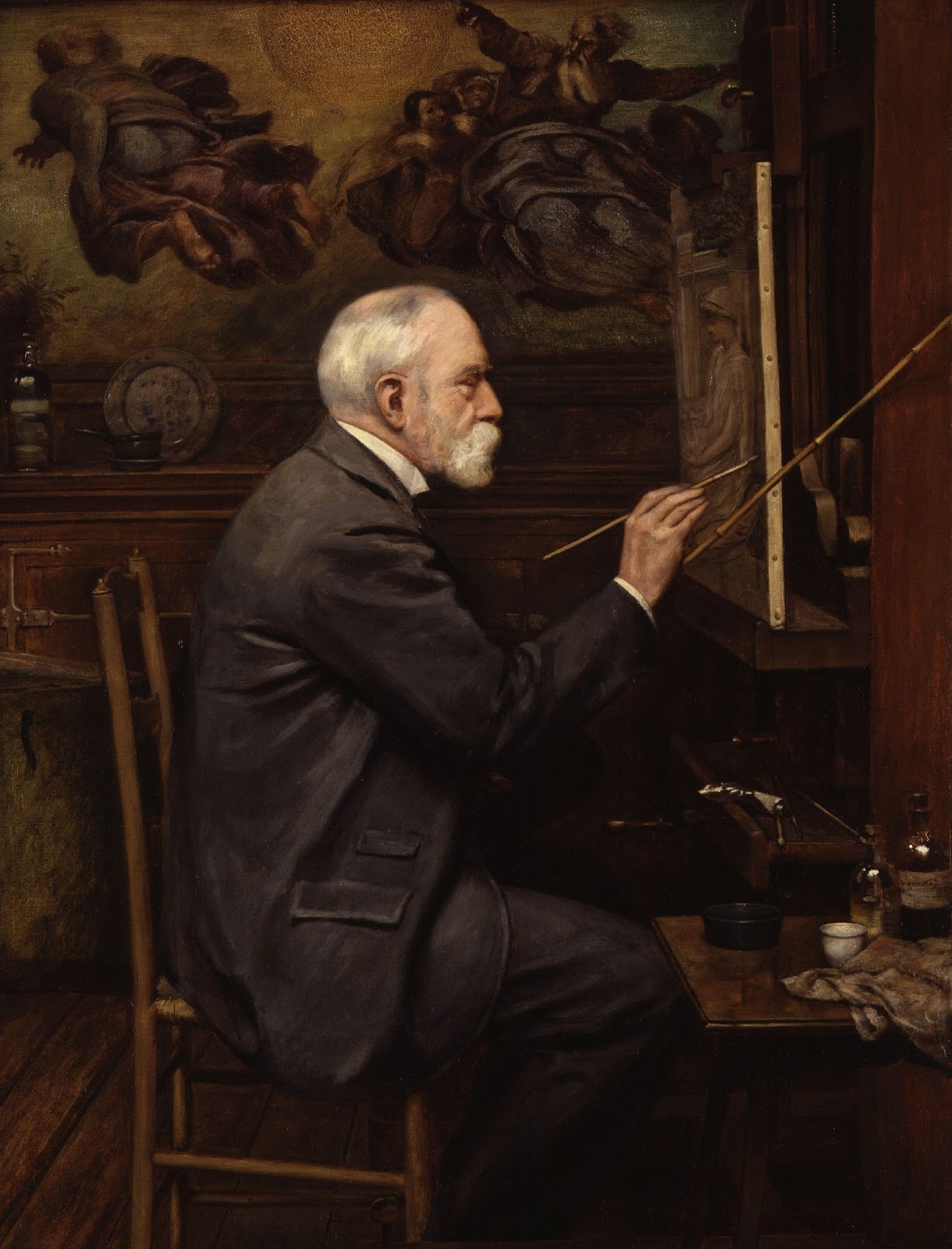
Edward John Poynter was a prominent British painter, known for his historical and mythological artworks that resonate with art collectors and experts. Born in Paris and educated in Britain, Poynter's career flourished with his detailed and evocative paintings, like "Israel in Egypt" and "The Visit of the Queen of Sheba to King Solomon," which reflect his profound historical knowledge and artistic skill. These works are celebrated for their intricate detail and vibrant storytelling, captivating viewers and holding significant positions in galleries and Masonic lodges globally.
Edward John Poynter's dedication to art education was evident through his roles as the Slade Professor at University College London and the principal of the National Art Training School. His contribution extended to administrative roles, notably as the Director of the National Gallery, where he played a pivotal role in the establishment of the Tate Gallery. His legacy in the art world is also marked by his presidency at the Royal Academy, demonstrating his influence and standing in the British art scene.
For those intrigued by Edward John Poynter's mastery and the historical depth of his work, his contributions to art literature, such as "Ten Lectures on Art," offer further insight into his artistic philosophy and approach. These works underscore his commitment to integrating art and archaeology, providing a richer understanding of his creative process and the era he depicted.
For art collectors and enthusiasts interested in Poynter's work and related auction events, staying updated through a subscription service can be invaluable. This ensures you receive timely information on sales and exhibitions featuring Edward John Poynter's art, allowing you to engage deeply with his historical and artistic legacy.
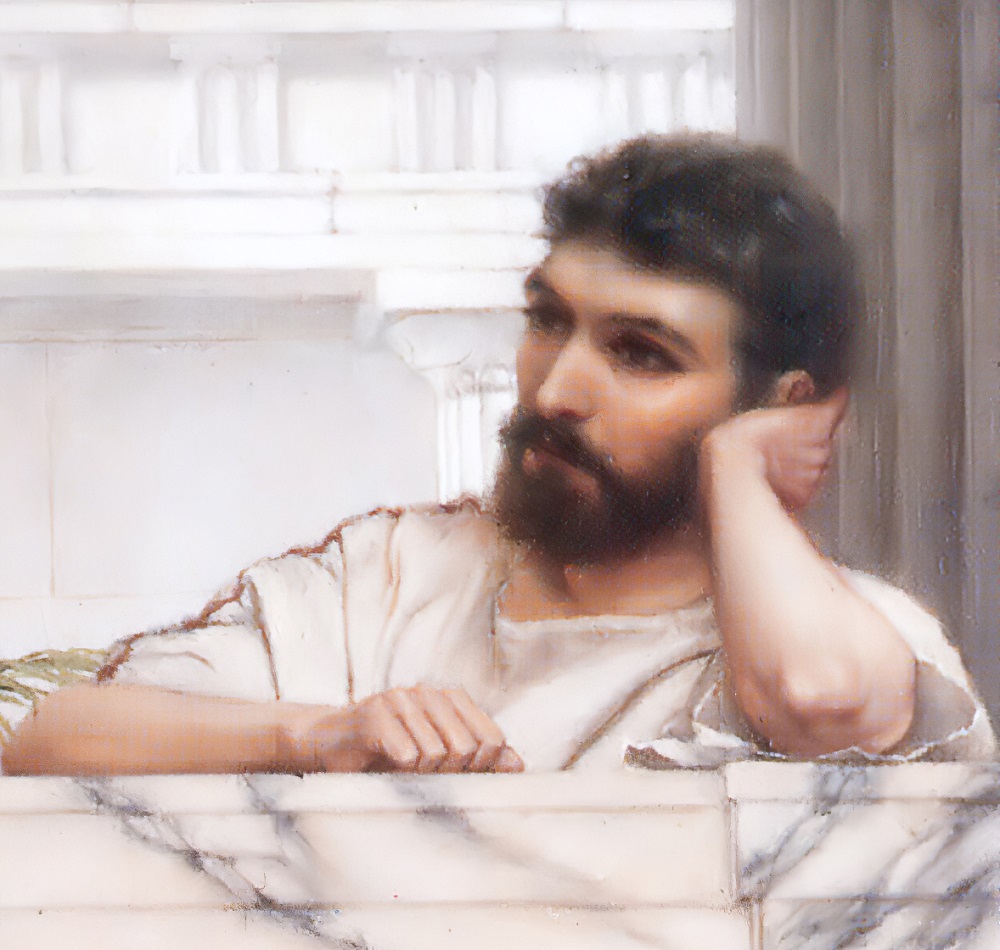
John William Godward was an English painter from the end of the Neo-Classicist era. He was a protégé of Sir Lawrence Alma-Tadema, but his style of painting fell out of favour with the rise of modern art.
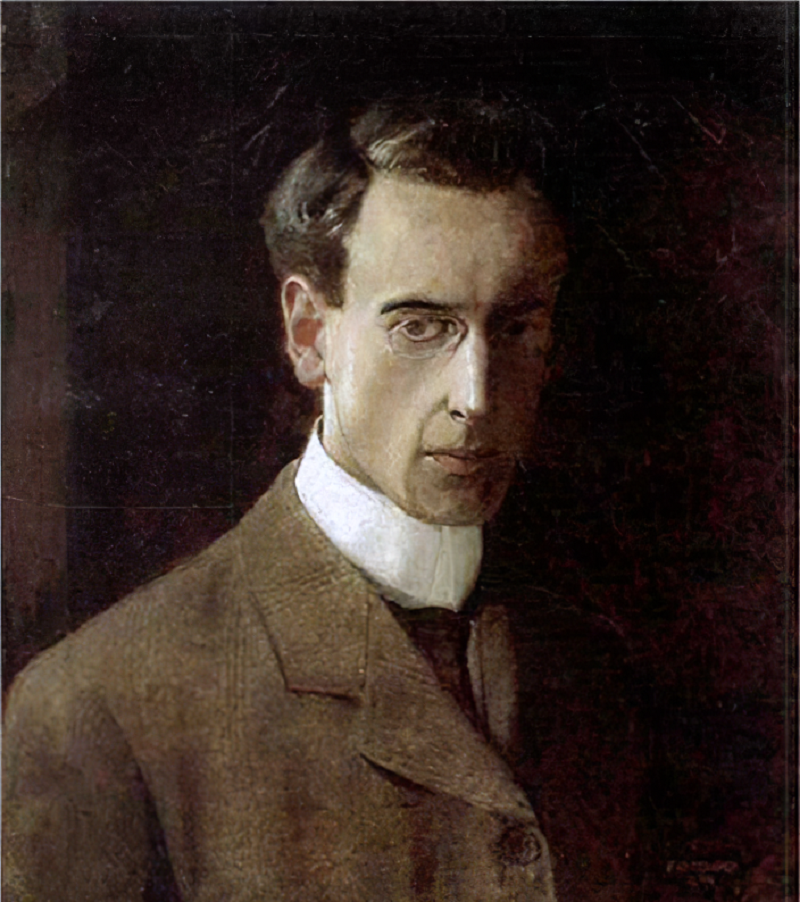
Frank Cadogan Cowper was an English painter and illustrator of portraits, historical, and literary scenes, described as "The last of the Pre-Raphaelites".
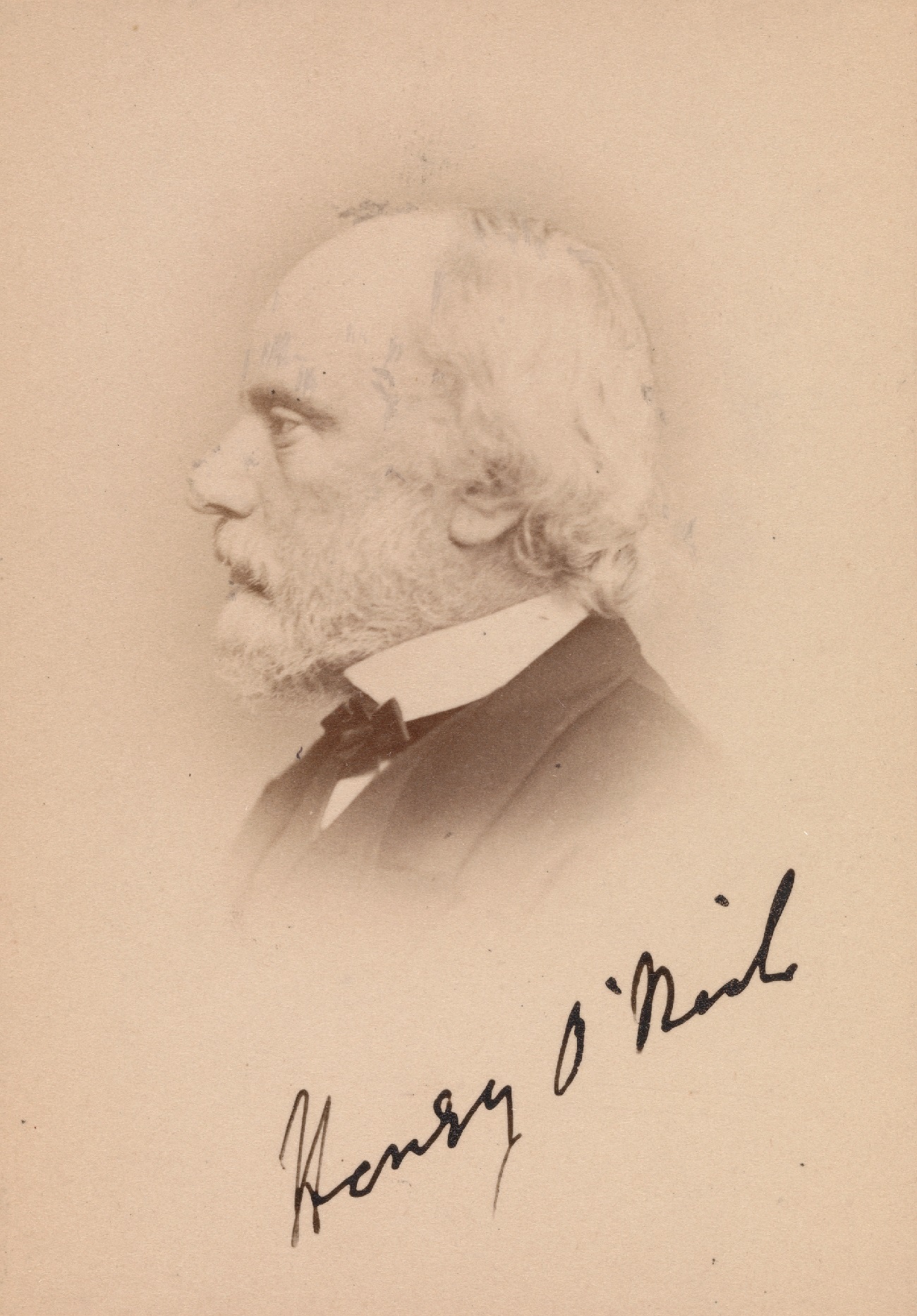
Henry Nelson O'Neil was a historical genre painter and minor Victorian writer. He worked primarily with historical and literary subjects, but his best-known paintings dealt with the Indian Mutiny.
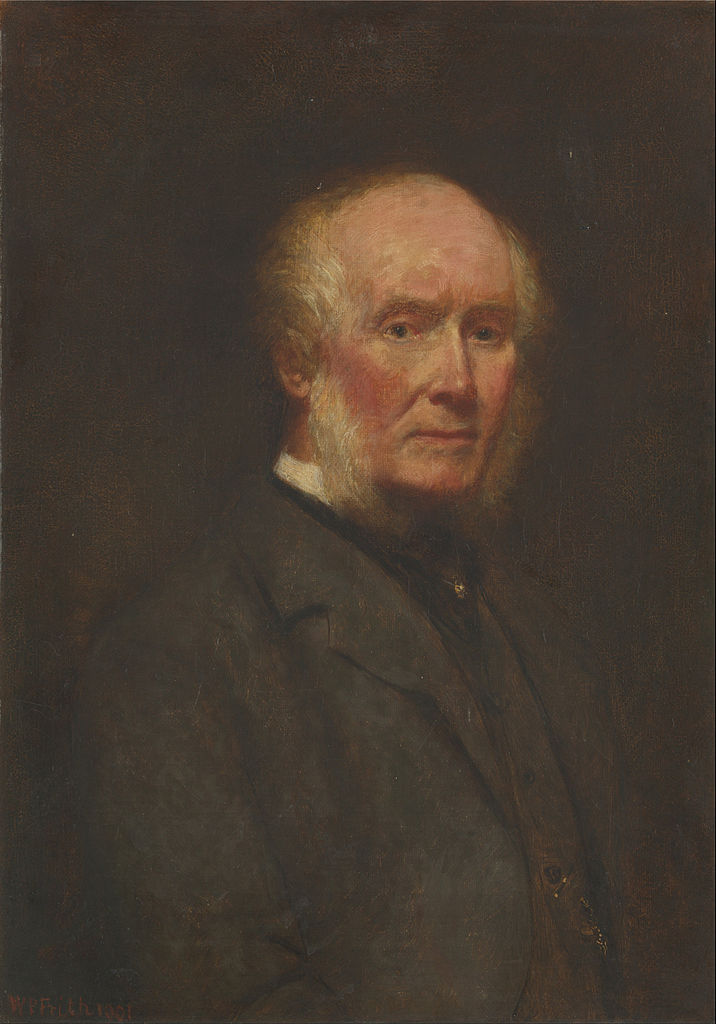
William Powell Frith was a British painter.
Frith studied at the Royal Academy School and fairly quickly began to exhibit there, becoming a Fellow of the Royal Academy in 1852. Frith became famous for his scenes of contemporary English life, including those with moralizing overtones. His multi-figure, complex compositions depict a wide variety of Victorian backgrounds. He was a traditionalist and an opponent of the Pre-Raphaelites, ridiculing them in his works.

William Powell Frith was a British painter.
Frith studied at the Royal Academy School and fairly quickly began to exhibit there, becoming a Fellow of the Royal Academy in 1852. Frith became famous for his scenes of contemporary English life, including those with moralizing overtones. His multi-figure, complex compositions depict a wide variety of Victorian backgrounds. He was a traditionalist and an opponent of the Pre-Raphaelites, ridiculing them in his works.

William Powell Frith was a British painter.
Frith studied at the Royal Academy School and fairly quickly began to exhibit there, becoming a Fellow of the Royal Academy in 1852. Frith became famous for his scenes of contemporary English life, including those with moralizing overtones. His multi-figure, complex compositions depict a wide variety of Victorian backgrounds. He was a traditionalist and an opponent of the Pre-Raphaelites, ridiculing them in his works.


